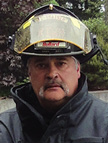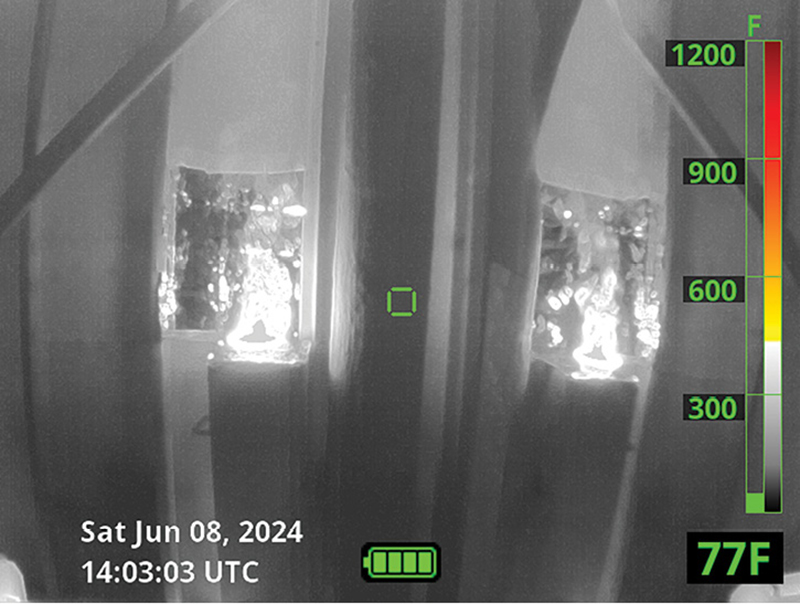What does an empty room, some various pieces of furniture, a training manikin, a smoke machine, a piece of stainless steel, some ice-cold water, hand pocket warmers, a little buddy propane heater, and some zip fire starter cubes in a metal container all have in common? These are all easy-to-obtain, inexpensive props that can be used for some basic thermal imaging (TI) training.
Setting up TI training in your firehouse can be a valuable and important asset for your firefighters. Here are some steps you can take to organize and implement effective TI training.
- Assess training needs: Identify the specific training needs of your firefighters regarding TI. Determine the level of expertise and experience within your team and tailor the training program accordingly.
- Secure training resources: Acquire the necessary TI equipment for training purposes. Ensure that the devices are in good working condition and that all firefighters have access to them during training sessions.
- Equipment familiarization: Provide hands-on training with the thermal imaging cameras (TICs) commonly used in your department. Ensure that firefighters are familiar with the functions, controls, and proper handling of the equipment.
- Introduction to TI: Start by introducing firefighters to the basic principles of TI, including how TICs work, the different heat signatures they detect, and their applications in firefighting.
- Interpreting thermal images: Teach firefighters how to interpret thermal images and distinguish between various heat sources, such as hot spots, victims, and structural weaknesses. Emphasize the importance of accurate interpretation for situational awareness.
- Search and rescue techniques: Train firefighters on using TI for search and rescue operations. Practice scenarios where firefighters locate victims in smoke-filled environments or identify hidden fire sources using TICs.
- Structural assessment: Educate firefighters on using TI to assess structural integrity and identify potential fire spread patterns. Demonstrate how TI can reveal hidden fire hazards behind walls or ceilings.
- Practical exercises: Conduct hands-on practical exercises to simulate real-life firefighting scenarios where TI is instrumental. Allow firefighters to apply their skills in using TICs to navigate dark, smoky environments and make critical decisions.
- Safety precautions: Emphasize safety protocols and best practices when using TI equipment, including proper care and maintenance of devices, battery management, and minimizing exposure to extreme heat.
- Develop training curriculum: Create a comprehensive training curriculum that covers the basics of TI, its applications in firefighting, interpretation of thermal images, and practical exercises to enhance skills.
- Schedule training sessions: Set up regular training sessions dedicated to TI. Consider incorporating both classroom learning and hands-on practical exercises to allow firefighters to apply their knowledge in real-life scenarios.
- Engage expert trainers: If possible, invite expert trainers or guest speakers who have experience in TI to provide specialized instruction and guidance to your firefighters.
- Encourage participation and feedback: Encourage active participation from all firefighters during training sessions and create a supportive environment for learning. Solicit feedback from participants to identify areas for improvement and adjust the training program as needed.
- Monitor progress and proficiency: Keep track of firefighters’ progress and proficiency in using TI technology. Provide ongoing support and resources to help them enhance their skills and confidence in using TICs effectively.
1 Dual fire images: The left side is real; the right side is a reflection. (Photos courtesy of Bullard.)
2 A little buddy propane heater used for a heat source.
CONSIDERATIONS
Some fire departments have the luxury of full Class A or B live fire training facilities, while other departments do not because of restrictions, budget, location, or other reasons. You can create an inexpensive training facility by being resourceful. You can obtain everything you need at your local hardware store. A dummy made from an old fire hose inside a pair of coveralls with some hand pocket warmers taped to it works just as well as an expensive training manikin.
Firefighters are scroungers—at least back in my day, we would find an old table, chairs, and sofa that someone was throwing away that work perfectly. A good source of heat comes from a little buddy propane heater, which can be used to simulate fire extension inside of a wall or in an empty barrel.
A piece of aluminum foil or stainless steel on the wall can be used to simulate reflections that can be caused from stainless steel appliances in a commercial kitchen or shiny ceramic tiles found in a washroom.
By following these steps and providing basic TI training to your firefighters, you can enhance their proficiency in using TICs during firefighting operations. Adapt the training program to suit the specific needs and skill levels of your team and remember to prioritize ongoing practice and reinforcement of learning.
MANFRED KIHN is a 19-year veteran of the fire service, having served as an ambulance officer, emergency services specialist, firefighter, captain, and fire chief. He has been a member of Bullard’s Emergency Responder team since 2005 and is the company’s fire training specialist for thermal imaging technology. He is certified through the Law Enforcement Thermographers’ Association (LETA) as a thermal imaging instructor and is a recipient of the Ontario Medal for Firefighters Bravery. If you have questions about thermal imaging, email him at Manfred_kihn@bullard.com.




